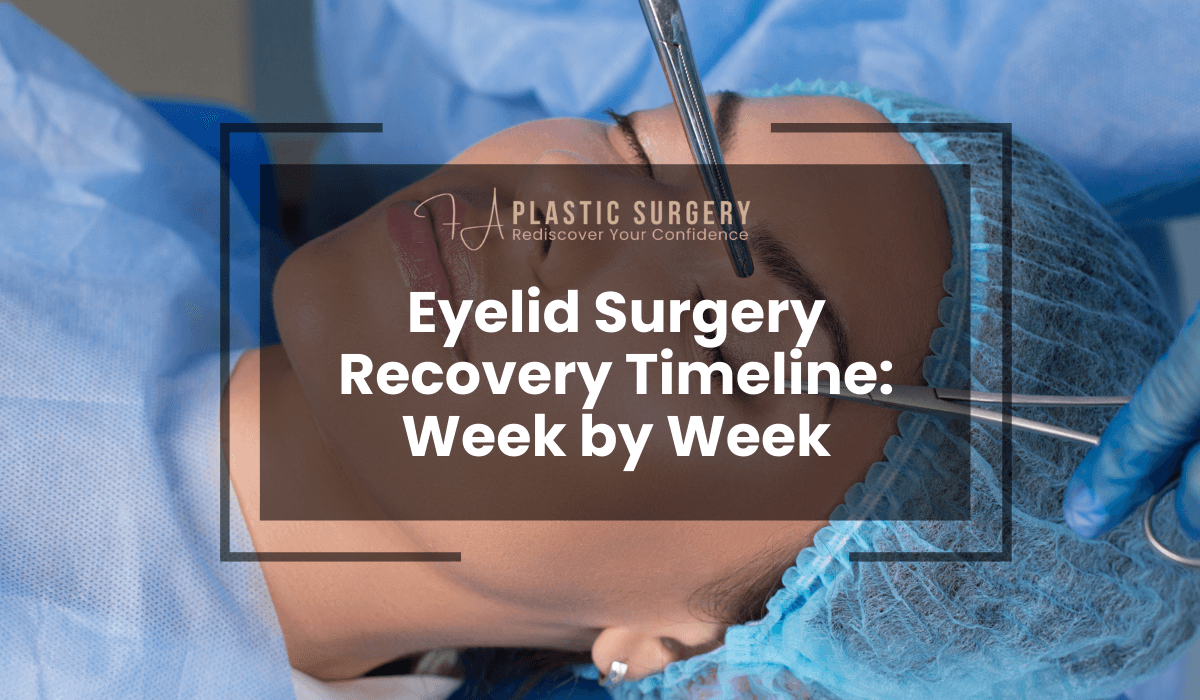Eyelid Surgery Recovery Timeline: Table of Contents
What to Expect During the First 24 Hours After Eyelid Surgery
The first 24 hours after eyelid surgery, also known as blepharoplasty, are critical for setting the stage for a smooth recovery. During this period, patients may experience swelling, bruising, and mild discomfort around the eyes. These symptoms are normal and should not cause alarm. Your surgeon will typically advise you to rest with your head elevated to reduce swelling and improve circulation.
Ice packs or cold compresses can be applied intermittently during this time to help manage swelling and minimize bruising. You may also notice some blurry vision due to ointments applied during surgery or mild dryness in the eyes; artificial tears can provide relief. Avoid rubbing your eyes or engaging in strenuous activities as these could interfere with the healing process.
It’s essential to follow all postoperative instructions provided by your surgeon, including taking prescribed medications such as pain relievers or antibiotics if needed. Additionally, avoid wearing contact lenses or makeup during this time. If you have any concerns about excessive pain or unusual symptoms, do not hesitate to contact your surgeon for advice.
A Detailed Look at Your 1 Week Post-Blepharoplasty Recovery
By the end of the first week post-surgery, most patients will notice significant improvements in initial symptoms such as swelling and bruising. However, it is normal for some residual puffiness and discoloration to persist around the eyes. You may feel tightness in the eyelids during this phase, which is part of the natural healing process.
Your surgeon will likely schedule a follow-up appointment within this timeframe to monitor your progress and ensure that there are no signs of complications such as infection or delayed healing. At this stage, it’s important to keep your incision sites clean and dry while avoiding exposure to direct sunlight or harsh environments.
Patients should continue following their recovery guidelines carefully, including avoiding strenuous activities like heavy lifting or exercise. Over-the-counter pain medications can be used if needed but consult with your surgeon before introducing any new treatments into your routine. If you’re unsure about anything related to your recovery journey, consider booking a consultation through our website: Book a Consultation.
Managing Swelling and Bruising in the Second Week of Recovery
The second week after blepharoplasty often marks a turning point in recovery as swelling and bruising begin to subside more noticeably. While some discoloration may still be present around the eyes, it is usually less pronounced than during the first week.
To further reduce swelling during this phase, continue sleeping with your head elevated on pillows and avoid lying flat on your back for prolonged periods. Gentle massages around non-incision areas (if approved by your surgeon) can help improve lymphatic drainage.
You might feel comfortable resuming light activities such as walking but should still refrain from intense physical exertion that could strain your healing incisions. Wearing sunglasses outdoors is recommended not only for UV protection but also for shielding sensitive areas from wind and debris.
When Will Stitches Be Removed and Incision Healing Begin?
Sutures placed during eyelid surgery are typically removed within five to seven days after the procedure unless dissolvable stitches were used. During their removal appointment, your surgeon will assess how well the incisions are healing and provide further care instructions tailored specifically for you.
Once stitches are removed (or dissolve), you’ll notice that incision sites start transitioning from red lines into faint scars over time—a process that can take several months depending on individual factors like skin type and adherence to aftercare protocols.
Pro Tip:
Avoid applying skincare products directly onto incision sites unless explicitly cleared by your doctor; doing so prematurely might introduce irritants slowing down proper closure formation instead!
Frequently Asked Questions About Blepharoplasty Recovery
1. What should I expect during the first 24 hours after eyelid surgery?
During the initial 24 hours, you may experience swelling, bruising, and mild discomfort around the eyes. These symptoms are normal and can be managed with rest, head elevation, and cold compresses. Avoid rubbing your eyes or engaging in strenuous activities to ensure proper healing.
2. How long will swelling and bruising last?
Swelling and bruising are most prominent during the first week but begin to subside significantly by the second week of recovery. Elevating your head while sleeping and following postoperative care instructions can help speed up this process.
3. When can I resume wearing makeup or contact lenses?
You should avoid wearing makeup or contact lenses for at least one to two weeks post-surgery, depending on your surgeon’s advice. This helps prevent irritation or infection while the incision sites heal.
4. When will my stitches be removed?
Sutures are typically removed within five to seven days after surgery unless dissolvable stitches were used. During this appointment, your surgeon will evaluate your progress and provide additional aftercare guidance.
5. Are there any activities I should avoid during recovery?
Avoid strenuous activities such as heavy lifting, intense exercise, or bending over for at least two weeks post-surgery. Light activities like walking are usually fine after the first few days but consult with your surgeon before resuming any physical exertion.
Upper And Lower Lid Blepahroplasty

